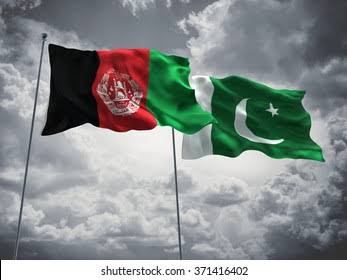Over the past week, Pakistan and Afghanistan have exchanged deadly cross-border fire in what analysts describe as the most intense clashes along their border in several years. The United Nations Assistance Mission in Afghanistan (UNAMA) reports at least 18 killed and more than 360 wounded since clashes began on October 10. Civilian areas along the border have seen damage, displacement, and interrupted trade.
The escalation reportedly began as Pakistani security forces targeted Tehrik-e-Taliban Pakistan (TTP) militants alleged to be operating from bases in Afghanistan. Pakistan then accused the Afghan Taliban government of harbouring these militants. In response, Afghanistan reported drone strikes in Kabul, and shelling by Pakistan on Afghan border posts. Tensions spiraled as both sides traded responsibility, with civilians caught in the crossfire.

The Ceasefire & Diplomatic Moves
Following urgent calls for restraint from regional actors (including Saudi Arabia and Qatar) both countries announced a short-term ceasefire, reported by Pakistan to be 48 hours in duration. The ceasefire came after some of the deadliest border clashes in years.
While the truce has been welcomed by international observers, several border crossings remain closed, and there is widespread concern regarding violations on both sides. Civilians in affected border districts are displaced; hospitals in Kabul report treating victims of shelling and drone strikes.
Key Players & Claims
- Pakistan alleges that Afghan territory (under Taliban control) is being used as safe-haven by TTP militants who carry out frequent attacks inside Pakistan. Islamabad has framed its military actions as self-defense and border security operations.
- Afghanistan’s Taliban government denies sheltering those militants and criticizes cross-border strikes (including drone attacks) as violations of Afghan sovereignty. Kabul calls for diplomatic resolution and often highlights civilian harm.
- Noor Wali Mehsud, TTP’s leader, is a central figure: Pakistan asserts he uses Afghan territory to plan and direct insurgent activity. His location and operations are among Islamabad’s chief concerns.
Humanitarian & Security Impacts
The violence has inflicted civilian casualties, damage to property, and mass displacement in border areas. Medical facilities in Afghan provinces near the border have been overwhelmed treating wounds consistent with shelling and drone strikes. Road trade, cross-border commerce, and daily life for residents of border regions are disrupted.
On the security front, Pakistan is facing what many describe as its “deadliest year in a decade,” with internal militant attacks increasing sharply. The TTP, IS-K (Islamic State Khorasan), and other groups remain active, complicating Pakistan’s domestic and foreign security priorities.
Risks of Escalation
- Breakdown of Ceasefire: The truce is short and fragile. Either side violating it could reignite hostilities swiftly.
- Regional Instability: Spillover of violence, refugee flows, and diplomatic strains with neighboring states are possible, especially with India, Iran, and powerful Gulf states watching closely.
- Civilian Harm and Displacement: Continued conflict risks worsening humanitarian crises, especially with Afghanistan’s limited capacity for large-scale response.
- Militant Resurgence: If militants like TTP continue to exploit border areas of ambiguity, it could lead to renewed Pakistani operations, potentially including cross-border strikes or targeting Afghan territory.
What’s at Stake & What to Watch
- How strictly the ceasefire holds: Are there verified violations? Are border crossings reopening?
- Civilian casualty figures and displacement numbers – whether international observers are allowed access.
- Whether Pakistan or Afghanistan will escalate diplomatic pressure (UN, OIC, other regional bodies) or seek mediation.
- Moves by militant groups (TTP, IS-K) during pauses in fighting: whether they regroup or are degraded.
- Domestic political implications: how the Pakistani government handles public perception of security, and how the Taliban government handles accusations of complicity or failure to protect its territory.

